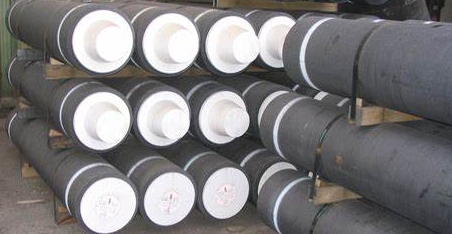
The graphite electrodes used in EAF welding are exposed to extreme temperature, electrical currents, chemical reactions, and other factors. The durability of carbon electrodes in steel production is crucial to ensuring consistent production.
In order to ensure the durability of graphite electrodes, manufacturers must conduct rigorous testing throughout the production process. This includes physical tests to look for chips, cracks, and deformations. Ultrasonic testing can also be used by manufacturers to detect small flaws, which are difficult to see visually.
Another important test is the cyclic behaviour of the graphite electrodes. The number of cycles that the electrodes undergo determines their durability in the field. The mechanical strength of the graphite will also be tested to see what stress the electrodes have been able to handle.

The cyclic behavior of graphite is measured by the modulus. The modulus depends on the stress applied to the electrodes in a cycle. The higher the modus, the more durable electrodes will be.
If the modulus of the graphite electrode decreases after several cycles, this indicates that the electrode has been damaged. This damage is caused by many factors, such as thermal expansion, changes in porosity, and chemical degradation. The amount and type of lithium ions present in a Graphite electrode can affect its modulus.
It is important that, during the cyclic tests of graphite electrodes, you note the effect of the cyclic behaviour of the electrodes on the electrical resistance. The electrical resistivity of the electrode is determined by how strongly it resists the flow of electric current. The electrical resistance of graphite is inversely proportional to its ability to conduct electricity.
It is common to measure the electrical resistance of graphite by measuring its bulk density, their true density and their electrical conductivity. These three properties have a relationship and can help determine the quality an electrode. The higher the bulk density and true density of an electrode, the more dense and electrically conducting it is. The better an electrode is for welding, the more conductivity it has. Manufacturers can add more graphite or flake to an electrode formulation to increase its conductivity. During the cyclic test of Hexagon’s Performance+ additive electrodes with more flake showed a higher conductivity than their synthetic control. Hexagon electrodes with a flake addition of 2.5% outperformed the all-synthetic controls in terms of conductivity and density. The best electrodes recorded with a 2-PI additive had a mass density of 1,62 g/cm3. This demonstrates that Hexagon's flake additive is able to improve the conductivity of graphite electrodes without compromising their mechanical strength. The test results show that a higher concentration of Hexagon's Performance+ can greatly improve the durability and performance of graphite electrodes. The result is a longer lifespan for these essential industrial tools that are critical to the production of high-quality steel.

Write a Message